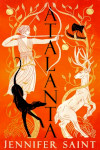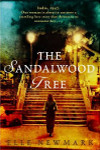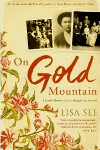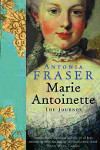Shannon Stacey – All He Ever Dreamed
Posted 22nd February 2013
Category: Reviews Genres: 2010s, Domestic, Romance
Comments Off on Shannon Stacey – All He Ever Dreamed

Meet the last male Kowalski.
Publisher: Carina Press (Harlequin)
Pages: 180
Type: Fiction
Age: Adult
ISBN: 978-14268-9462-6
First Published: 21st January 2013
Date Reviewed: 25th January 2013
Rating: 3.5/5
Josh Kowalski is fed up of running his family’s guest house, feeling that life is passing him by whilst his siblings are free to do whatever they want. There are plans to put the house on the market but before that can happen the housekeeper has a relapse and her pneumonia returns. Her daughter Katie, Josh’s long-time best friend, moves in to help out. Katie has been in love with Josh for as long as she can remember, and knows Josh sees her only as a friend. But will living together change that, and what happens if Josh’s wanderlust never goes away?
All He Ever Dreamed is the sixth book in Stacey’s Kowalski series, and the third to focus on the families who live in Maine. Like the rest of the books there is a strong element of familial bonds however in this case much of it comes not from the Kowalskis themselves but rather from Katie’s mother, Rose, who is almost part of the family herself. This does mean, therefore, that the usual family element is somewhat lacking – it’s a case of being a fine story in a fine context if viewed by itself, but if viewed as part of a series it inevitably pales in comparison to, say, Yours To Keep, which featured the New Hampshire branch of the Kowalskis and included all the children. Stacey does make up for this somewhat by populating Josh and Katie’s story with friends, however because they are secondary characters they are not as developed and it may be difficult for the reader to bond with them.
The relationship between Josh and Katie is strong enough, even if it does simply repeat Sean and Emma’s to an extent (both books include cohabitation – the first for pretense, this one for the upkeep of a lodge). Stacey has done a good job creating characters who are a good fit, as well as making Katie an extended family member. It does seem odd, at times, that Rose and Katie are so integrated, because the New Hampshire stories are so confined to blood ties, but it’s not completely out of place; it allows Josh to have his own romance without the difficulty of having to change the entire atmosphere of these books by making him go on a journey to look for a girlfriend. At the same time, however, the convenience of it all does make it obvious that this will be the last Kowalski book unless Stacey bucks the trend and writes books about the sisters in the family.
The story may be predictable, and that predictability quite acceptable given that a big part of the success of these books lies in the reader being able to settle down with something they know well, but the story does seem too easy. Josh’s wanderlust is confined to a short space of time and he doesn’t go particularly far; in the end you can’t help but feel it was just a waste of time – indeed he went on about leaving so much that the short time he’s away seems a bit of a joke. Of course it allows for him to be with Katie, which is what the book is all about, but “easy” is the word. His mental conflict, what was supposed to be so important and the catalyst in his development as a person is relegated to a short trip and constant contact phone calls with his family. From the moment they get together, Katie rightfully worries that if Josh stays he will later blame her for making him feel pressured, but in the end Josh doesn’t really have a choice of where to be, even if he says he does. Unfortunately the author can tell you anything, and the character can tell you anything, but in reality Josh would not be completely happy with the choice he makes.
The chemistry between Josh and Katie is good. Perhaps because Stacey spends an ample amount of time documenting their history as friends and the lead up to their relationship – as well as the issues that arise from wanting to keep the friendship – the characters feel all the more right for each other and there is no need for over the top demonstrations of feelings. Stacey sets the background so well that she is able to write the story as though you’ve been reading about the characters for years – romance and dating is unnecessary, for example – and whilst this might make the narrative less exciting it can’t be said that it doesn’t work and doesn’t portray reality1. The reader may also find some interest in the age difference – Katie is three years older than Josh.
Rose, like Kat in Yours To Keep (more similarities arise the more you think about it) has her own romantic storyline to keep her busy. It works better than Kat’s did (even if Kat’s wasn’t bad, per se) though it does pull the focus away from the main couple and, due to Stacey’s way of writing it does have an element of “so what” – in other words Stacey doesn’t give you enough reason to care. However it’s not a negative point because of the emphasis placed on Rose’s role at the lodge and in Josh’s life.
Yet for all the convenience and “lack of Kowalski” in Josh and Katie’s story, the book is a success. It is indeed due to the fact that it is one of a series that this book feels unsuccessful – when viewed as an individual “product” it is as strong as the next strongest novel. Josh’s monotonous life may seem boring but how many people get to be constantly on the move? As such, his life is a reflection of millions of others. If the other Kowalski men are fantasies, then Josh is perhaps the real guy next door, the man who would truly exist in reality. In fact it is the very times he mirrors other romantic heroes successfully that, due to his character, actually seem unrealistic, for example his sudden noticing of Katie being a woman when surely there was ample opportunity prior to their cohabitation. Indeed it could be said that it is the melding of the “traditional” Kowalski alpha male with this realistic unsettled-being-settled man that is the cause for a lot of the book’s issues. A very interesting point to consider.
All He Ever Dreamed may not be the best book in the series, but it is far from a bad book. Timings may be out but the relationship is as strong as any and the difference in story allows Stacey to explore new lives within the same context. And whilst it may be obvious that this may be the last book, it can’t be said that this show of winding down isn’t appropriate.
You’ve read about every other son and his amazing life; now read about what happens to the one who holds the fort to allow it all to happen.
1 Primary source for this statement: my own relationship which was the same best-friends-to-lovers-and-everyone-knew-it-would-happen, if just on a much shorter time scale to Stacey’s characters.
I received this book for review from Carina Press.
Related Books
Pam Jenoff – The Ambassador’s Daughter
Posted 18th February 2013
Category: Reviews Genres: 2010s, Angst, Domestic, Historical, Political, Romance, Social
3 Comments

Love and war. They change everything.
Publisher: Mira (Harlequin)
Pages: 376
Type: Fiction
Age: Adult
ISBN: 978-1-848-45203-9
First Published: 29th January 2013
Date Reviewed: 13th February 2013
Rating: 3/5
Margot, a German Jew, has spent the war (WW1) living abroad with her father whilst he works at universities. She has a fiancé who went to war but when he returned wounded, Margot decided to stay with her father. She loves Stefan, but not enough, and feels trapped by the idea of marrying him. In Paris, where her father has moved to attend the conference for the treaty at Versailles, she meets Krysia, a woman very different to her who urges her to be her own person in this new world. But because of Krysia, Margot is found by Ignatz, and when Margot meets Georg Richwalder, from the German delegation, she is no longer able to live her life through her own choices.
The Ambassador’s Daughter is a book that looks at the confusion that came with the war and its end, the way the world changed, and the way that a person was able to remake themselves accordingly. Focused on the main character, the war provides the context and backdrop for Margot’s decisions, but it also allows Jenoff to look at the effects of war in general.
The only issue with these two topics being placed together – a historic war and the trials of a young woman – is that one was always going to be used less than the other, and while it’s not bad, per se, that Jenoff chose Margot, it does mean that there is space for further problems.
The main problem with The Ambassador’s Daughter is the main character. Whilst it is in no way necessary to have a character a reader can like, Margot’s constant worries, repetitious thoughts, and poor choices make her rather unrealistic. It is true a person might be indecisive and worry, especially in times of war, but the fact of the first person narrative makes the tale complex for the wrong reasons; if written in the third person Margot may have come across very differently.
The war being considered very little unfortunately makes Margot seem self-absorbed. She is often oblivious to what people have said, even when it is paramount, and does not see what is staring her in the face. When there is hope and a real chance, she pushes it away. The era was not good for women but her father’s support for her education, even if he wished to see her settled, would have made for a stronger sense of reason and fight, if not strength itself.
So the plot is confusing and there are many points that are not expanded. This does mirror, however, the confusion of war and thus makes it difficult to say with confidence that Margot is unreasonable. Her religion, her relative wealth, her father’s position in the world, would have in reality made for a tricky situation, especially when her mother’s death is included in that mix. It’s the fact that Margot never really saw the war that makes her self-absorption so difficult to accept.
Apart from Margot there are some very well developed and poignant characters. Georg, emotionally wounded but striving to stay strong, provides a brilliant contrast to Margot’s indecision; Stefan, for all his misplaced loyalty, is understandable and if anything this makes Margot’s choices worse. Her father is a different story. Revelations in the book may make the reader’s feelings for him change, or at least create a reason for reassessment.
The book is full of lies; lies between the characters, lies towards the reader, indeed it could almost be said that the theme of the book is lies. By themselves they may be considered too numerous. When looked at generally, these are actually clever devices, drawing everything together in their deception and showing that the war might be over but nothing will ever be the same.
There are some plot points that may be considered too convenient. Jenoff deals with the result well, and in fact in at least one place there is a great show of not using it to get to an easy situation, however it does still detract from the book.
Whilst the writing is, overall, rather good, there are a number of Americanisms that do not fit. Margot uses terms such as “gotten” and “fall” (as in autumn). Considering she has spent years in England and never speaks of America except when referring to another’s discussion, the terms are out of place. There is also the matter of research and the usage of objects not yet invented.
However for all this, The Ambassador’s Daughter is not all bad. The romance is lovely, if spoiled by Margot’s indecision, and the focus on Germans is interesting. Looking at the Treaty of Versailles from the point of view of the everyday German provides much food for thought, and learning about the aftermath for the common person is interesting in general. The characterisation of Georg is so fantastic it could keep the book going even if Jenoff had everyone suddenly break into song.
The exploration of change after war, the way people were practically forced to change, is wonderful. The varying nature of the characters and the different ways they cope or choose to move on provides plenty of food for thought. And whilst it is difficult to write off Margot’s anxiety with this statement, Jenoff never gives the reader any need to feel that they must like the narrator.
The detailing may be misplaced and interesting threads lost to oblivion, but there is much to take away from this book. It will not suit everyone; it will likely divide opinion and cause contention for its structure and lack of adherence to history, but it is far from bad. The Ambassador’s Daughter has many flaws, but the ideas it imparts are appealing.
I received this book for review from ED Public Relations.
Related Books
Lisa See – Shanghai Girls
Posted 15th February 2013
Category: Reviews Genres: 2000s, Domestic, Historical, Political, Social
8 Comments

Unfortunately for some it was more of a fool’s gold mountain.
Publisher: Bloomsbury
Pages: 307
Type: Fiction
Age: Adult
ISBN: 978-1-4088-0112-3
First Published: 2009
Date Reviewed: 24th January 2013
Rating: 5/5
When Pearl and May’s father loses the family’s wealth and is threatened by a gang, the girls must marry the sons of another client and leave Shanghai for Los Angeles. The Japanese have started bombing China, but the sisters hope to trick the gang and somehow stay put, keeping their lives as models intact. But that cannot happen and instead they find themselves in dire circumstances before beginning the journey to a country that does not welcome Chinese people, seeking the protection of their new husbands and the family that claims to be making lots of money on the gold mountain.
Shanghai Girls is an excellent novel that looks at how the Japanese invasion of China, and then Communist China, affected those people who had left for America. With a well-developed cast of characters and a detailed backdrop, the story has an atmosphere that few readers, if any, could pass up.
Suffice to say that the story by itself is fantastic – See is a master at writing characters, story, and prose to hook the reader – but the brilliance of the book is the detailing and handling of the conflicts. Set over a couples of decades, beginning in the 1930s and ending in the late 1950s, See places the sisters in situations that allow her to fully explain the events of the times.
This does mean that the story is often gruesome. As in previous books See never shies away from in-depth examination of bound feet, for example, but whereas Snow Flower And The Secret Fan and Peony In Love were set in an earlier period and focused on different types of women, the modernity and setting in Shanghai Girls means that there is a look at how violence towards women escalates during war, and how intrusive and immoral people could be to those they saw as below them. However as much as the violence is explicit, See manages to balance her writing, staying on the line between unnecessary content and lessons.
One of the major aspects of the story is the way the Chinese who immigrated to America reacted to events at home, and how they balanced their old lives with the new ones. One part of this, for example, is the way in which many people wanted to keep traditions, but were not in favour of Mao; this is focused on when See brings in the interrogation of the Chinese by the American government who wanted to rid their land of Communists (and, indeed, simply rid the country of Chinese, full stop). Not only had the Chinese been held, sometimes for months, on their arrival during the Japanese occupation (when America was seeking to deport any illegal immigrants) but the beginning of Communism in China stopped the slow progress of tolerance and began a new wave of discrimination and hate, all in the name of keeping America’s liberty and freedom. Of the initial interrogations, See devotes whole chapters, letting the reader live with May and Pearl throughout the months they tried to gain freedom to travel to Los Angeles, rather than giving readers the easy task of simply knowing it happened. See’s wish to inform her readers of the history may be obvious and hard to read at times, but it is never overbearing or preachy.
See’s characters, for the most part, were all born in China, and whilst May and Pearl begin as modern Shanghai women – intent on being western – Pearl especially starts to see her parents’ traditions as something to adopt herself. This means that for a long time See is restricted to viewing the historical events through their eyes and in the context of immigrants. So when American-born Chinese characters are introduced, See not only shows the arguments that can arise from a culture clash, but also the way young minds can be susceptible to outside influences. And whilst her focus is on communism, See’s handling of the subject enables her message to be timeless.
As to the characters themselves they are developed to the extent that the reader may feel that longing for a continuation after the final pages. (In this regard it’s wonderful that there is a sequel, even if Shanghai Girls‘s cliff-hanger ending is difficult to accept.) And of course there is a vast scope – young and modern, modern but somewhat set in tradition, and strict tradition. Not only are the characters interesting in themselves but also the grouping of them as one family allows for the exploration of family and religious values.
There is a lot of information on the film industry at the time. The sisters, immigrants, can see the way in which Hollywood looks for the exotic rather than the realistic – portraying China as something it never was – as well as the discrimination and stupidity of relegating Chinese people to the roles of extras whilst employing caucasians to play the prominent Chinese characters in the script. The differences between the sisters gives See the opportunity to look at these issues from the view of the person who didn’t care, and the person who saw the hate for Asians. It also gives her the chance to comment on the way in which Asians often look the same to Westerners, where one character with talent is interchangeable with another who lacks it and the director does not realise why he needs so many takes. This issue is looked at further when the American Chinese have to take to wearing clothes with text that says they are not Japanese.
A particularly interesting aspect of the story is the way the sisters feel about each other. The reader may think time and again that this time they will have a bond-breaking argument, but See shows how arguments are different in families as well as showing how allowances are made.
Shanghai Girls spans many years but never feels rushed. The periods See chooses to skip are understandable and lets you see how life trundles along despite hardship. Because of the events See wanted to include in her story, the gaps make sense – this had the potential to be incredibly long when it is just the right length as it is.
Shanghai Girls is a look at war, culture, and everything that is included. It looks at the affects of war on family and country and gives a timeless message of what can happen if people do not work together during those wars. Above all it is the story of a family thrown together by circumstance where the one true bond is between two sisters, and includes the added effect that lies and suspicion have on lives. The book is a triumph in every way and whilst it ends on a huge cliff-hanger it is the sort of book that makes you desperate to move straight on to the sequel.
Related Books
Becky Aikman – Saturday Night Widows
Posted 8th February 2013
Category: Reviews Genres: 2010s, Domestic, Memoir, Science, Social, Spiritual
4 Comments

Life after death. A great life.
Publisher: Crown (Random House)
Pages: 334
Type: Non-Fiction
Age: Adult
ISBN: 978-0-307-59043-5
First Published: 22nd January 2013
Date Reviewed: 31st January 2013
Rating: 5/5
Aikman tells the story of life as a widow; first being dumped from the stereotypical support group, and then her quest to create a new sort of group – one focused on remaking lives and finding oneself in new experiences. She gathers five women of similar ages together and each month for a year they try something new – a spa, a cooking lesson, and lastly a grand holiday. Along the way they learn to live with their new lives and to love again. Interspersed with this main story are those of the days each woman lost her husband, Aikman’s discovery of new love, and information about research into grief.
Saturday Night Widows is a fantastic book with fantastic characters. It’s safe to say that if this were fiction, these women would be on book-lover’s lists everywhere and this is testament to how wonderful they are and how well Aikman writes. Rather than focusing on loss and grief, Aikman looks at the positives, the second chance at life and the chance to remake oneself – whilst grief is included, this is a book about happiness and triumph.
From what Aikman says, it appears that apart from wanting to simply conduct an experiment, Aikman may have envisaged a book from the very start; that is perhaps the reason why the memoir is insightful, helpful for those going through grief, and just simply a good book in general.
One of the most important themes of the book is the way both outsiders and the women themselves relate to widowhood and death, for example when Aikman wished to hire staff at an art museum to conduct a tour about remaking lives, the manager phoned her with ideas for art focusing on death. Aikman details how people can be overly helpful or say the wrong things, whether in innocence or because they feel the time for mourning should be over, and she explains (often in the context of her friends) why these things are bad.
Important too are the issues with blending families – two newly-single parents coming together when children are in the mix – which includes Aikman’s own issues with being a stepmother to a girl who didn’t want a stepmother. Whilst the women in the group are of similar ages their children are not, and this allows for a broad assessment of complications, and, of course, achievements.
And considering the ages of the women – the youngest 39, the oldest 57 – there was no easy acceptance of death as there might have been in old-age. With a variety of reasons for the deaths, including sudden death and suicide, the women present a detailed look at grieving and coping.
Dawn didn’t know anything about lotus blossoms when he gave her the photograph six months before he died. She asked him why, of all the glorious sights in the wild, he had chosen this image of a lotus, rooted in an inky swamp, for her. “It is because a lotus blossom will grow and perfume and flower,” he said, “even in the muck”.
Everyone made that same contented sound that Dawn had uttered before. We got it, all right. All of us – Denise, Dawn, Marcia, Lesley, Tara, me – we were blooming in the muck.
Wonderful is the way Aikman presents the women, how they leap off the pages, as colourful and positive in print as they’ve become in real-life. The presentation to the reader is a remaking in its own way as you grow to love them and know them rather well.
The one thing that might divide readers is the focus on experiments. There is quite a lot of exploration into scientific research and trials that can at times seem rather careless (the trials themselves that is, rather than Aikman’s retelling). Aikman details the women as though they are an experiment and this can make them read as children sometimes rather than friends. True, the group was an experiment of sorts, and Aikman, a reporter by trade, speaks of how she took her tape recorder to meetings and lead them in a way, but it can subtract from the friendliness and healing aspects of it all. One could say that to Aikman these women were subjects, but as you read on it is clear she is one of them just as much as any other. Yet all this is understandable because of Aikman’s job as a reporter, and, it must be said, it’s also quite a boon to the book because of the unique angle it takes and the information it offers to anyone wishing to look into it as a subject.
A great deal of credit must go to Aikman’s writing style, the way she mixes accounts of the monthly meetings with memories of the past and what is happening in the present. The book would likely not suffer if it were just focused on the meetings, because it is a strong thread as it is, but these three aspects and time periods mean that the book is so varied and detailed (even without straying from the main theme) that it is difficult not to want to keep reading. There is never a dull moment where nothing happens. If this is a prime example of Aikman’s work then the newspaper she worked at has surely lost a fabulous employee.
Saturday Night Widows has a vast appeal. Undoubtedly a book for women who have also lost their husbands, the work has a general interest aspect to it as well as being a likely candidate for a book about women that would interest a male audience, too. Filled with memorable people who you will find yourself continuing to root for beyond the last page, the book is an example of looking adversity in the eye without suggesting that grief is anything but awful to get away from. Sad, happy, contemplative, funny, and sentimental without dwelling too long (indeed this is the group’s aim), and written by a true talent with plenty of experience in the craft, Saturday Night Widows is one to look out for on any night of the week.
I received this book for review from Crown Publishers.
Related Books
None yet.
B N Peacock – A Tainted Dawn
Posted 6th February 2013
Category: Reviews Genres: 2010s, Historical, Social
4 Comments

A rocky dawn.
Publisher: Fireship Press
Pages: 339
Type: Fiction
Age: Adult
ISBN: 978-1-61179-212-6
First Published: 2012
Date Reviewed: 5th February 2013
Rating: 0.5/5
Edward’s father is dead and the boy wants respect; when his family scorn him he signs on as a ship-man, finding no respect there either. Jemmy, the fiddler, runs away from home. Louis wants France to be better off. This all takes place around the time of the French Revolution and slavery.
A Tainted Dawn is, unfortunately, for all the history in it, a rather bad book. The writing is poor and the novel is full of spelling and grammatical errors. It would appear that no editing was performed. There is little in the way of plot, the author focusing on characters; this would usually be fine but in this case the story is very confusing due to the writing and it is incredibly difficult to know whether people are coming or going. There is nothing to recommend the characters to the reader and despite the abundance of description in the book, scant time is given to the protagonists’ own.
Peacock uses “big words” when they are not needed. It does infer that the author wanted to create an epic, which is fair, but it does not work. Sentences such as “All three went their separate ways, but all three retained the memory of others”, and phrases such as “Edward perversely inventoried the paintings” are prime examples of the problems with the text.
The issue with all of this, beyond the idea of “big words”, is that it is evident Peacock knows her history well and wants to impart her knowledge to the reader. Evidence comes in the form of info-dumping, where long paragraphs or even pages are taken up by descriptions of people or situations that are not warranted in the book but would be rather useful otherwise. It is no use knowing all about a character you are not going to encounter in more than one scene, for example, yet the historical information provided in the description might be of use to a student. Doubtless Peacock loves all her characters, but that doesn’t mean the reader will accept them similarly without a proper introduction to them, and there is far too much telling (no showing). There are also peculiar descriptions such as “she had skin the colour of chocolate richly laced with cream” for a mulatto (mixed-race) woman.
There are a few occasions where Peacock succeeds and may captivate the reader, unfortunately these are short-lived, being followed by puzzling plot points. There is also too much emphasis on bullying and punishment – though believable in reality, in this book it does not work.
The backdrop is the French Revolution – but there is not nearly enough time given to it, indeed although the characters think about it and live in a changing world they are so removed in other ways that it would be easy enough to allocate them to a completely different era. Instead of worrying about war they worry about their family tree, one even goes so far as to travel to the Caribbean before jumping ship, literally, and going home due to a dream they had about their father being arrested. The connection between the three characters is tenuous at best.
Peacock knows her history and her wish to teach readers is commendable. But it must be said that her teachings are better suited to non-fiction and would likely be rather compelling if presented in that manner. As it is, A Tainted Dawn is confusing, rushed, and includes too many incomprehensible episodes. A naval enthusiast may enjoy the sailing, but it’s likely leisurely readers will not find it smooth.
I received this book for review from Historical Fiction Virtual Author Tours.




































